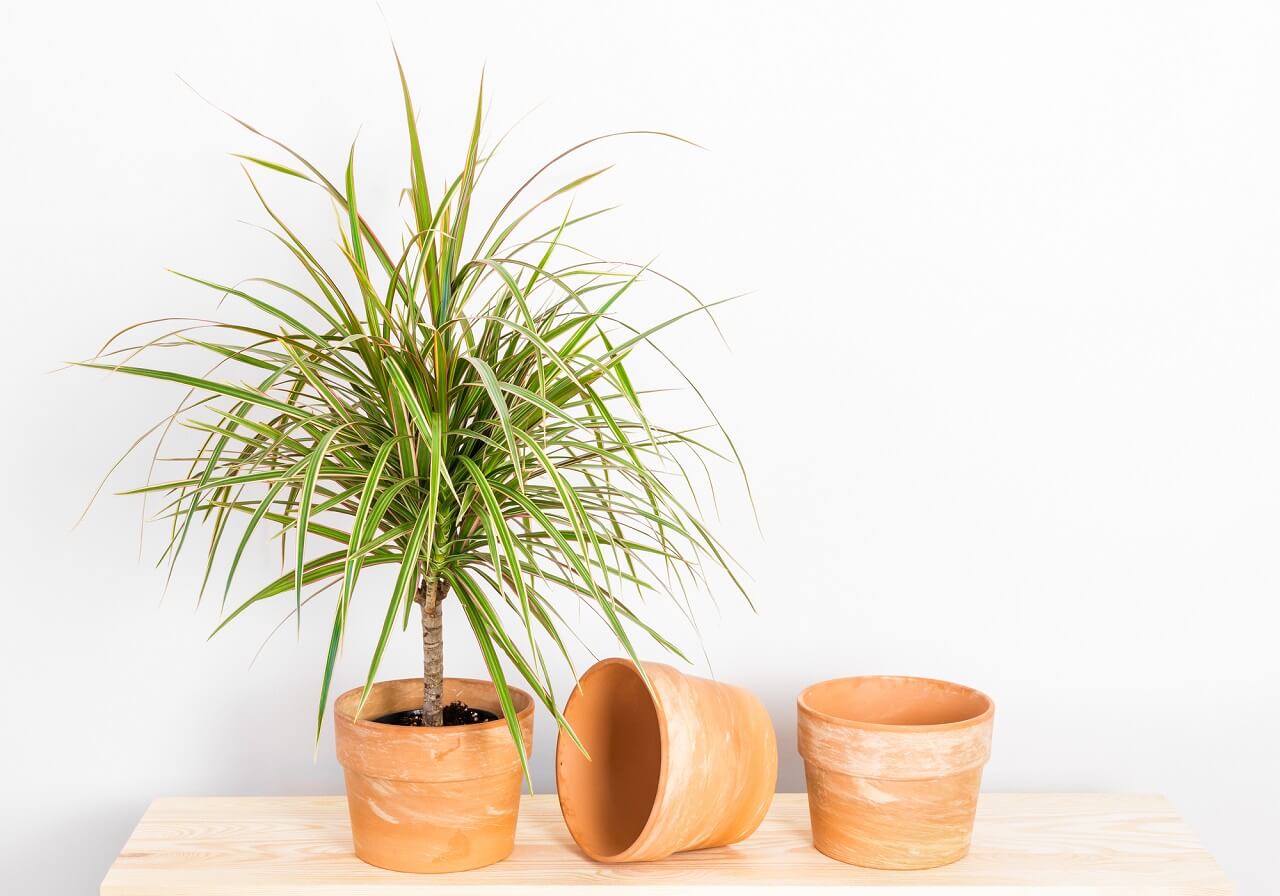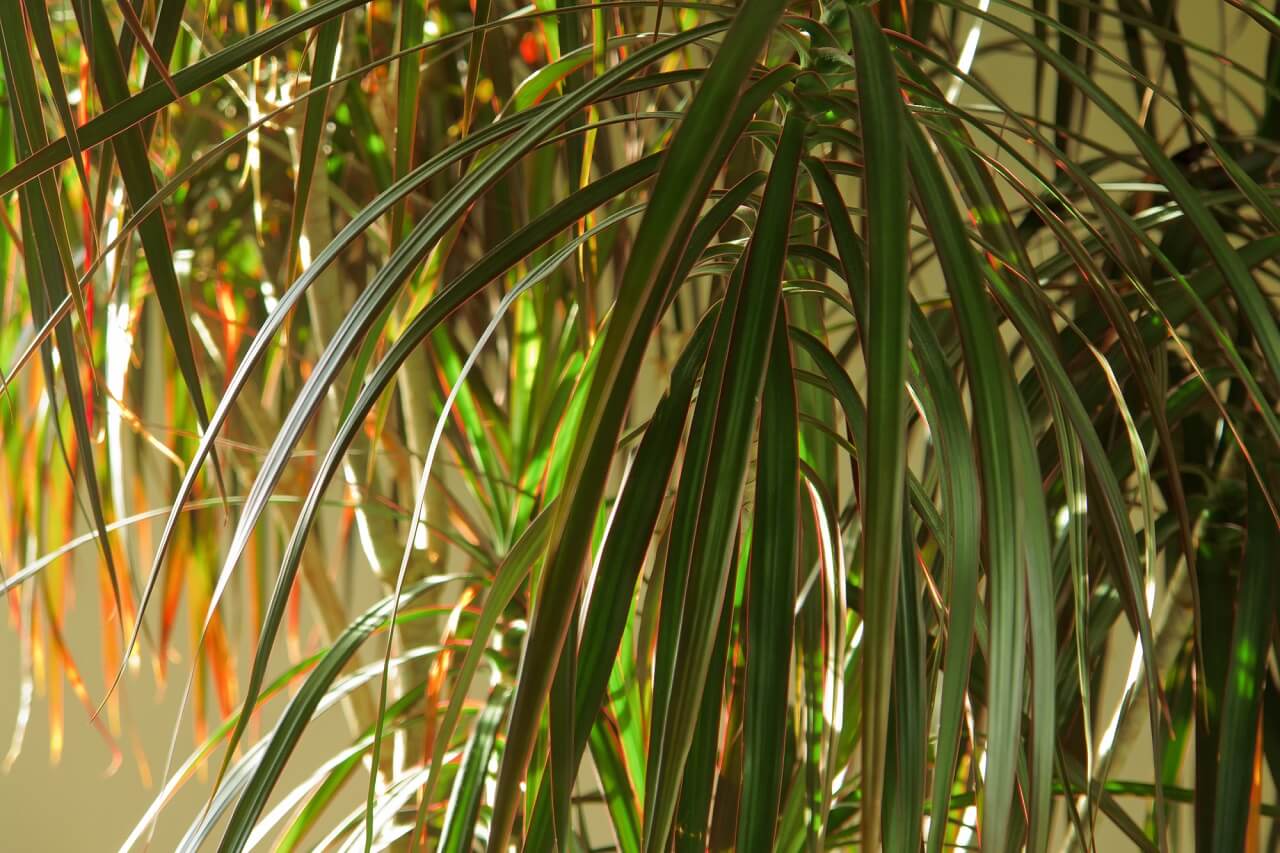One of the great things about Madagascar Dragon Trees is that not only are they easy to care for, but they are also easy to prune. These trees are customizable in appearance, too – meaning that pruning them is optional. If you don’t like the way your dragon tree is growing, or you’d like it to be more compact, you can trim and train it to grow how you want it. This article will give you some advice on how to safely prune your dragon tree.
What You'll Learn Today
Can a Dragon Tree Be Cut Back?

Most Dracaena plants don’t mind pruning, and Madagascar dragon trees are no exception. Dragon trees can be cut back as needed, for several different reasons. Here’s when you may have to prune your Dracaena Marginata.
- To control the shape: Many plant owners prune their dragon tree purely for cosmetic reasons. If your plant is tall and leggy, for example, there are ways to prune it to encourage a bushier look.
- To contain growth: Mature indoor dragon trees typically reach a height of about 6 feet, but some plant owners report theirs growing as tall as 10 feet. If your space doesn’t allow for that amount of growth, you can certainly trim it down.
- To rejuvenate a sad plant: Dragon trees will tolerate low-light conditions, but that doesn’t mean that they will like it. These plants can get thin and gangly in dim light, and you’ll often notice stems branching way out, leaning towards the light. When this happens, you can prune the plant to give it a fresh start after moving it into proper light.
- To manage infestations: Dragon trees aren’t particularly prone to pests, but under certain conditions are susceptible to bugs like mealybugs, thrips, and spider mites. Depending on the damage that was caused, you may have to prune your plant in the aftermath.
- For disease damage control: If your dragon tree is suffering from an issue such as leaf spot disease or root rot, you may end up having to trim diseased leaves or damaged stems.
Can I Cut the Top Off of My Dragon Tree?
Madagascar Dragon Trees start with a single trunk and a head that comes out of it. If you were to never prune it and instead let it grow naturally, it would never branch out.
This is totally fine if that’s how you want your plant to look and it’s growing well. However, many dragon tree owners prefer a shorter, compact look, or they don’t have room for a tall plant.
In any case, it’s perfectly fine to cut the top of your dragon tree. Many people who do this for the first time are scared of ruining their plant, but they’re always pleasantly surprised when new growth begins shortly afterward.
Where Do I Cut the Dragon Tree?

It can be confusing to figure out where to prune back a dragon tree to achieve your vision for the plant. Here’s a quick guide:
Step 1: Wait For the Right Time
Removing dead stems and leaves can be done at any time during the year. But if you’ll be doing any significant pruning, it should be done during the proper season.
Dragon trees should mainly be pruned in the warmer months of spring and summer. This gives your plant more time to recover before the slower growth period in winter.
Step 2: Clean Your Garden Shears
This is a commonly heard sentiment that always bears repeating. A lot of newer plant owners overlook the importance of disinfecting their garden shears or scissors before each pruning session.
Several plant diseases are difficult to spot right away. If you unknowingly used your shears or scissors on a diseased plant and then moved onto another plant, the second plant is at risk of infection.
Step 3: Remove Dead Foliage
Before you trim your dragon tree, collect any dead leaves and peel off any dying leaves to tidy up the plant. This will also help you see what you’re working with more clearly.
If some of the leaves towards the bottom of the tree are starting to brown and die (as is natural for dragon trees), feel free to trim the brown sections off.
Step 4: Make the Cut
If you’re cutting the main stem to control the height of your dragon tree, cut the stem at the desired height. This type of cut should be done straight across (not at an angle) to minimize the chance of infection.
If you’re trimming smaller branches off of the main stem, cut them at a 45-degree angle near the base of the stem.
Step 5: Clean the Plant
Since you’re already giving your plant some extra TLC, this is a great time to give it a good cleaning. You can do this by gently wiping the leaves with a solution of dish soap and water.
Houseplants should be cleaned regularly to get rid of any dust or dirt. Debris that lingers on the leaves can block sunlight and hinder photosynthesis.
Regular cleaning will also protect against pests.
If you’d like a visual demonstration on how to prune your dragon tree, watch this YouTube video:
Can I Propagate a Dragon Tree?
One of the best things about pruning a plant is that it sometimes allows you to make new plants. Dragon trees are extremely easy to propagate from stem cuttings.
Although there are several ways to propagate a Madagascar dragon tree, rooting cuttings in water is the easiest method.
All you need to do is take one of the branches or stem cuttings you collected while pruning and place it in a clear glass full of water. Put the glass in a nice, bright spot and wait until roots appear.
Roots should appear after a few days, but wait at least a couple of weeks to place the cutting in soil. You can put it in a fresh pot of soil, or add it to the pot with the original plant if you’d like.
Dragon trees are easy plants that keep on giving. You can trim them to match your preferences, make new plants easily, and even neglect them from time to time (it happens to the best of us). As long as you give them the proper growing conditions, you’ll be able to enjoy this beauty for decades.
I’ve recently pruned my Dragon Tree and I have a lot of debris. can I compost it?
In short, yes! Any decomposed plant matter is great food for other plants, so feel free to compost your Dragon Tree’s prunings. The only exception is if the plant has a disease – cuttings from a diseased plant should always be binned or burnt to prevent the infection from spreading to other plants.